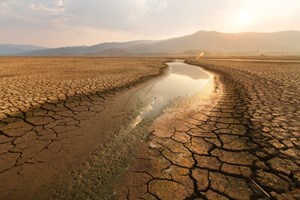UN: Droughts increase nearly a third since 2000
(UC) — The United Nations Convention to Combat Desertification (UNCCD) said droughts are continuing to happen more frequently and last longer, accounting for a 29% increase in number and duration since 2000.

The UNCCD’s latest Drought in Numbers report shows that droughts represented 15% of natural disasters from 1970 to 2019 and caused about 650,000 during that period.
“(The) facts and figures of this publication all point in the same direction: An upward trajectory in the duration of droughts and the severity of impacts, not only affecting human societies but also the ecological systems upon which the survival of all life depends, including that of our own species,” NCCD Executive Secretary Ibrahim Thiaw said.
From 1998 to 2017, droughts cost about $124 billion in economic losses. From 2000 to 2019, droughts impacted about 1.4 billion people through their effects on societies, ecosystems and economies.
This year, more than 2.3 billion people face “water stress” and almost 160 million children are exposed to severe and prolonged droughts, the UN said.
Droughts affect Africa more than any other continent (44% of the global total is in Africa), but no continent is safe from drought. In the United States, droughts have led to crop failures and other economic losses totaling $249 billion since 1980.
One of the best solutions to droughts is land restoration, Thiaw said, noting that would address underlying factors including degraded water cycles and loss of soil fertility.
“We must build and rebuild our landscapes better, mimicking nature wherever possible and creating functional ecological systems,” he said.
Sustainable and efficient agricultural management techniques are needed to grow more food on less land and with less water, and humans must change their relationships with food, fodder and fiber – moving toward plant-based diets and stemming the consumption of animals, according to the brief.
If nothing changes, by 2040, one in four children could live in areas with extreme water shortages, 700 million people risk being displaced by 2030, and droughts could affect more than 75% of the world’s population by 2050.
Related News
From Archive

- Glenfarne Alaska LNG targets late-2026 construction start for 807-mile pipeline project
- U.S. water reuse boom to fuel $47 billion in infrastructure spending through 2035
- $2.3 billion approved to construct 236-mile Texas-to-Gulf gas pipeline
- Major water pipe break in Puerto Rico hits over 165,000 customers
- Potomac River Tunnel project enters construction phase beneath Washington, D.C.
- Pennsylvania American Water launches interactive map to identify, replace lead water service lines
- Trump's tariffs drive $33 million cost increase for Cincinnati sewer project
- Utah city launches historic $70 million tunnel project using box jacking under active rail line
- Tulsa residents warned after sewer lines damaged by boring work
- Fatal trench collapse halts sewer construction in Massachusetts; two workers hospitalized



Comments